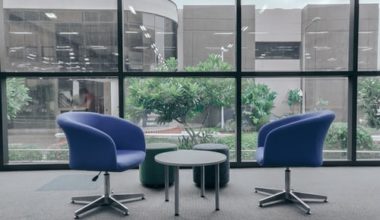Outside cement plaster is an outside complete process consisting of portland cement, sand, blended in with water to shape a useful plaster. Admixtures might be added for different purposes including usefulness. Its benefits incorporate utility, moderately low initial cost, and least requirement for support. Plaster can be a beneficial confronting material: hard, solid, and in particular, fireproof.
Application
Portland cement plaster is applied either the hard way or machine to the outside and inside wall surfaces in a few coats. It could be applied straightforwardly to a strong base like brickwork or concrete walls or applied to a metal strip joined to outline construction, strong workmanship, or concrete construction. When applied to metal slats, three layers of plaster structure a 7/8-inch absolute thickness. A fume porous, water-safe structure paper isolates the plaster and strip from water-delicate sheathing or outlining.
Shading
Shading is dictated by choosing cement and total tone and is frequently altered by adding mineral oxide colors to the plaster blend. In numerous spaces, manufacturing plant arranged completion coat items are accessible. Pre-pigmented bundled cement likewise can be utilized to accomplish the ideal plaster tone or pre-gauged mineral oxide colors can be added to the completion coat plaster during blending.
Surface
The surface is accomplished by choosing the total size, controlling completion blend consistency, and utilizing unique treatment strategies during and later use of the completion coat plaster. The surface gives substance and character to the plaster surface. It tends to be utilized to give features, profundity, coherence, and division, and by the plaster installer’s strategies during and later utilization of the completion coat plaster.
Imperviousness to fire Properties of Portland Cement-based plaster
Imperviousness to fire is normally grouped by a fire rating, yet what sort of fire rating does plaster give? Things that impact the fire rating of a plaster framework incorporate the sort of material utilized for the help part, size of the help part, presence/nonattendance and kind of outside sheathing, total in the plaster blend, presence/nonappearance of protection, presence/nonappearance of inside wall completing materials (gypsum wallboard, and so forth) and thickness of the segment.
In 1991, the Foundation of the Wall and Ceiling Industry distributed a reference guide on portland cement-based plaster/plaster frameworks utilized for fire security, the Single Source Document on Fire-Rated Portland Cement-Based Plaster Assemblies. Architects, specifiers, construction standard authorities, project workers, and overall population are the target group. The data contained in that is utilized as a guide to survey congregations utilizing the referred to distributions, fire test reports, industry norms, and codes.
For instance, a run-of-the-mill outside wall gathering may be a three-coat arrangement of plaster more than 2-by-4-inch wood studs utilizing metal slat joined to the studs, either with or without a layer of sheathing, similar to compressed wood. On the inside side would be a layer of gypsum board. The detail for a framework made with these parts is relegated a one-hour fire rating as per the current California Building Code and most other model codes.
Via another model, a three-coat arrangement of plaster applied north of 2-by-6-inch wood studs utilizing metal strip connected to the studs, over a layer of 5/8″ Type ‘X’ gypsum sheathing, and on the inside side two layers of 5/8″ Type ‘X’ gypsum board is assigned as having a two-hour fire rating, again as indicated by current California Building Code and most other model codes.
Close other options
A capable establishment of outside cement plaster ought not to be mistaken for the outside protection and finish frameworks (EIFS) or manufactured plaster frameworks that have become famous. Engineered plaster consists of a polymer-based cover that is wet-applied, ordinarily in two coats, to an unbending protection board attached to the wall with adhesive, mechanical latches, or both. Polymer-based (PB) frameworks, now and then known as flimsy coats, delicate coats, or adaptable completions, are the most widely recognized. Disappointment modes include
1). dampness becoming caught with the framework and prompting corruption of contiguous materials including primary sheathing and wood outlining, and,
2). dampness caught inside the framework causing the development of the substrate and therefore disappointment of the plaster cladding,
3). sway harm given that the plaster surface is too meager to even think about retaining huge effect, and, 4). manufactured frameworks are not fire-resistive.









